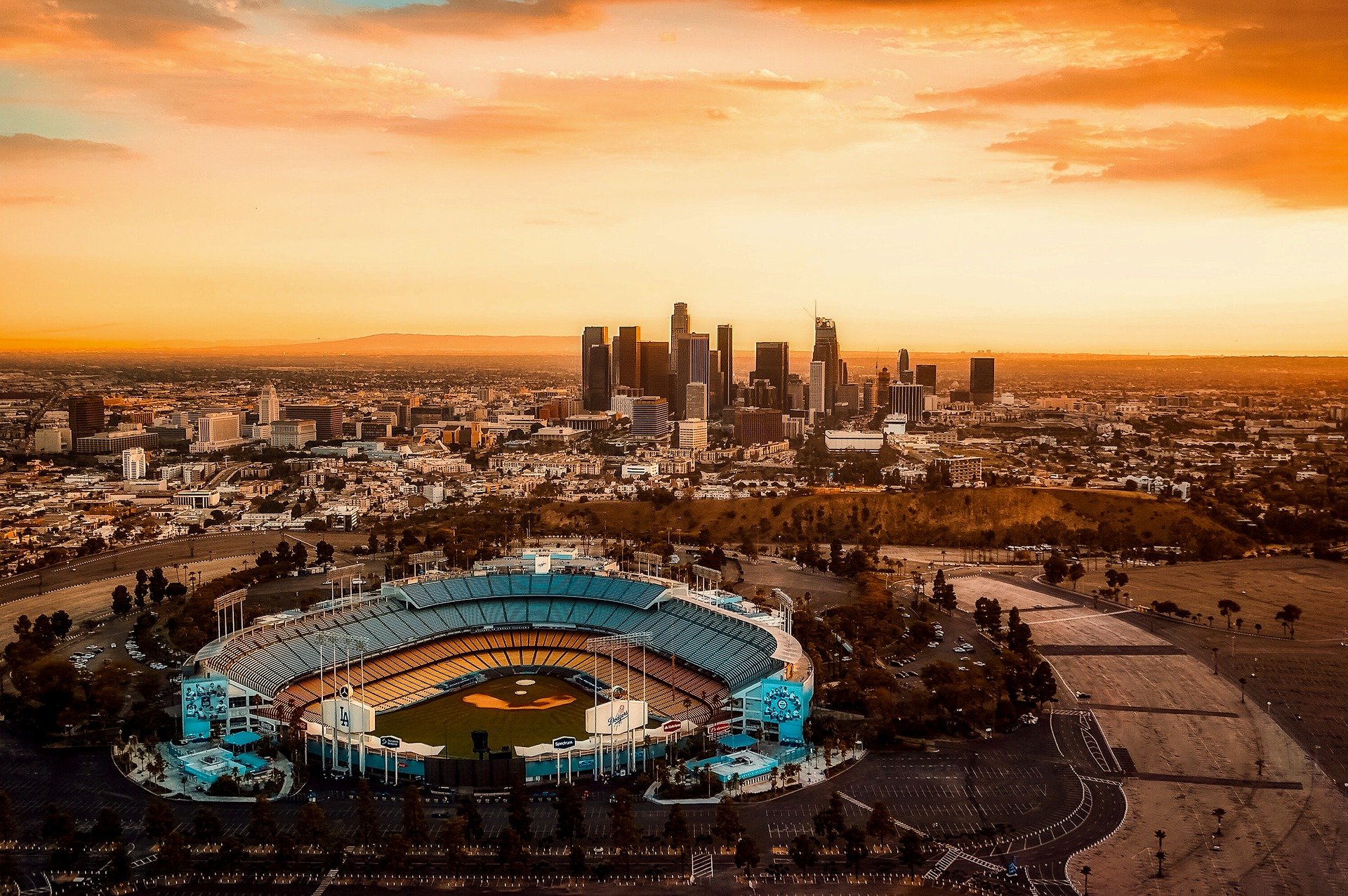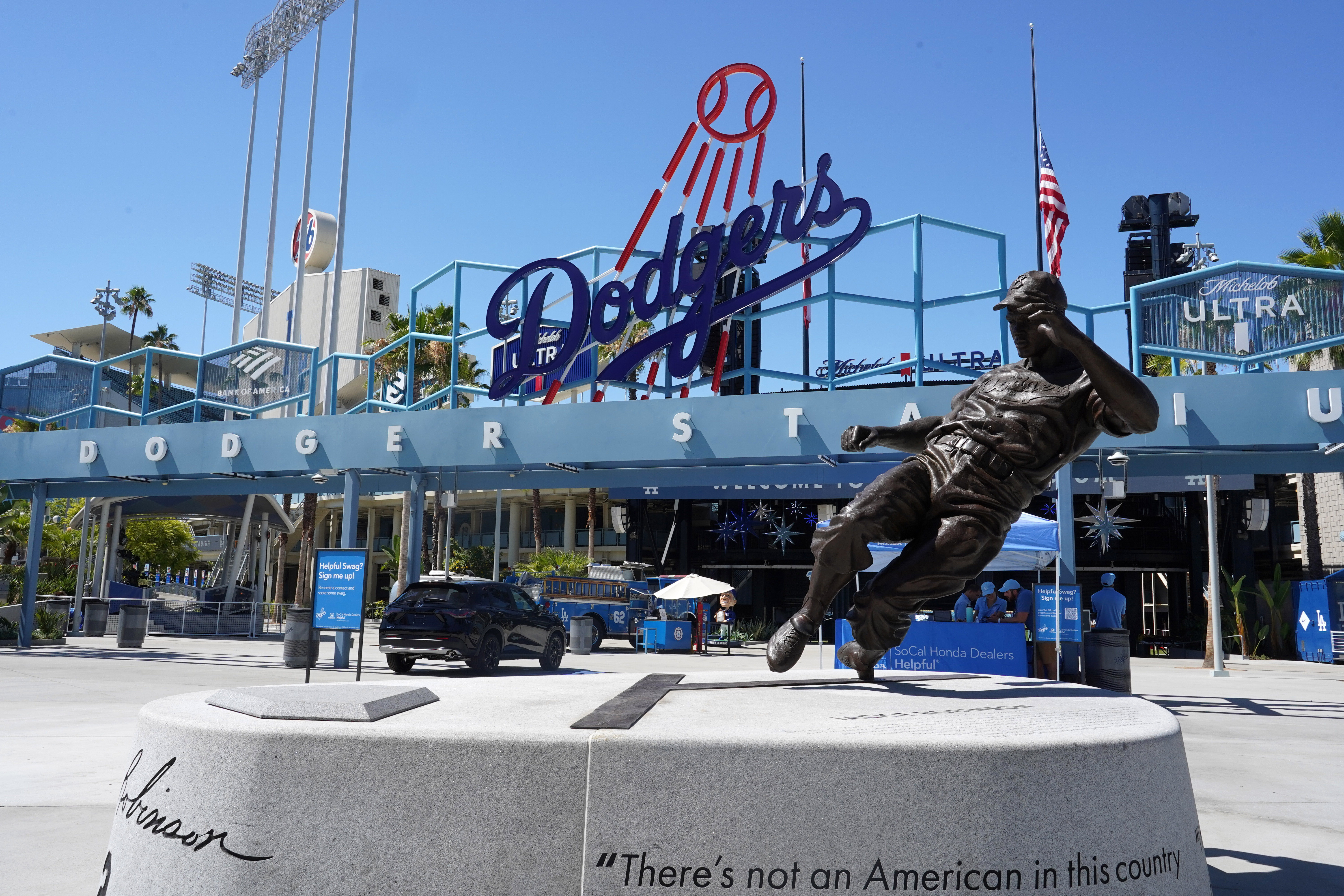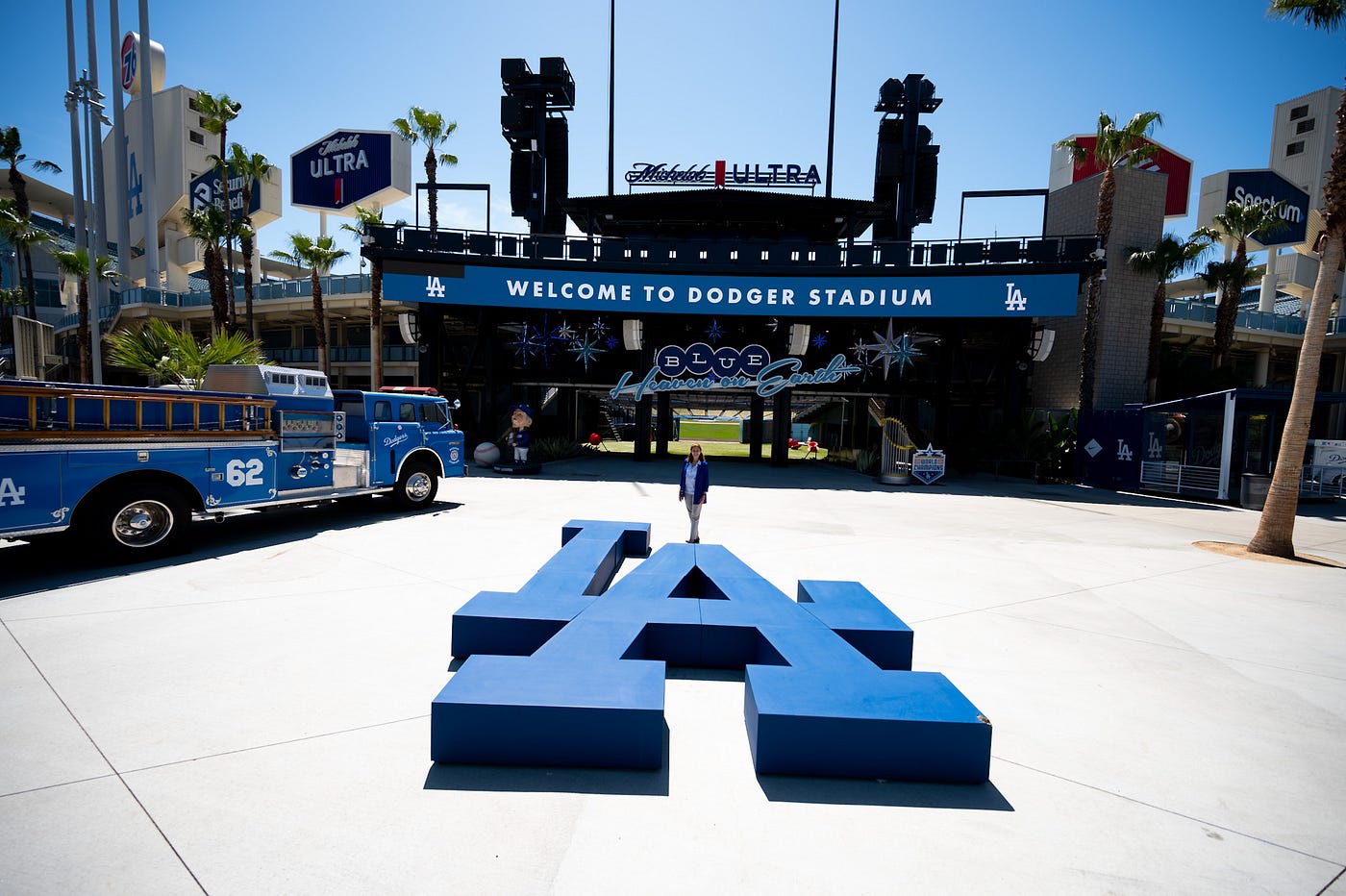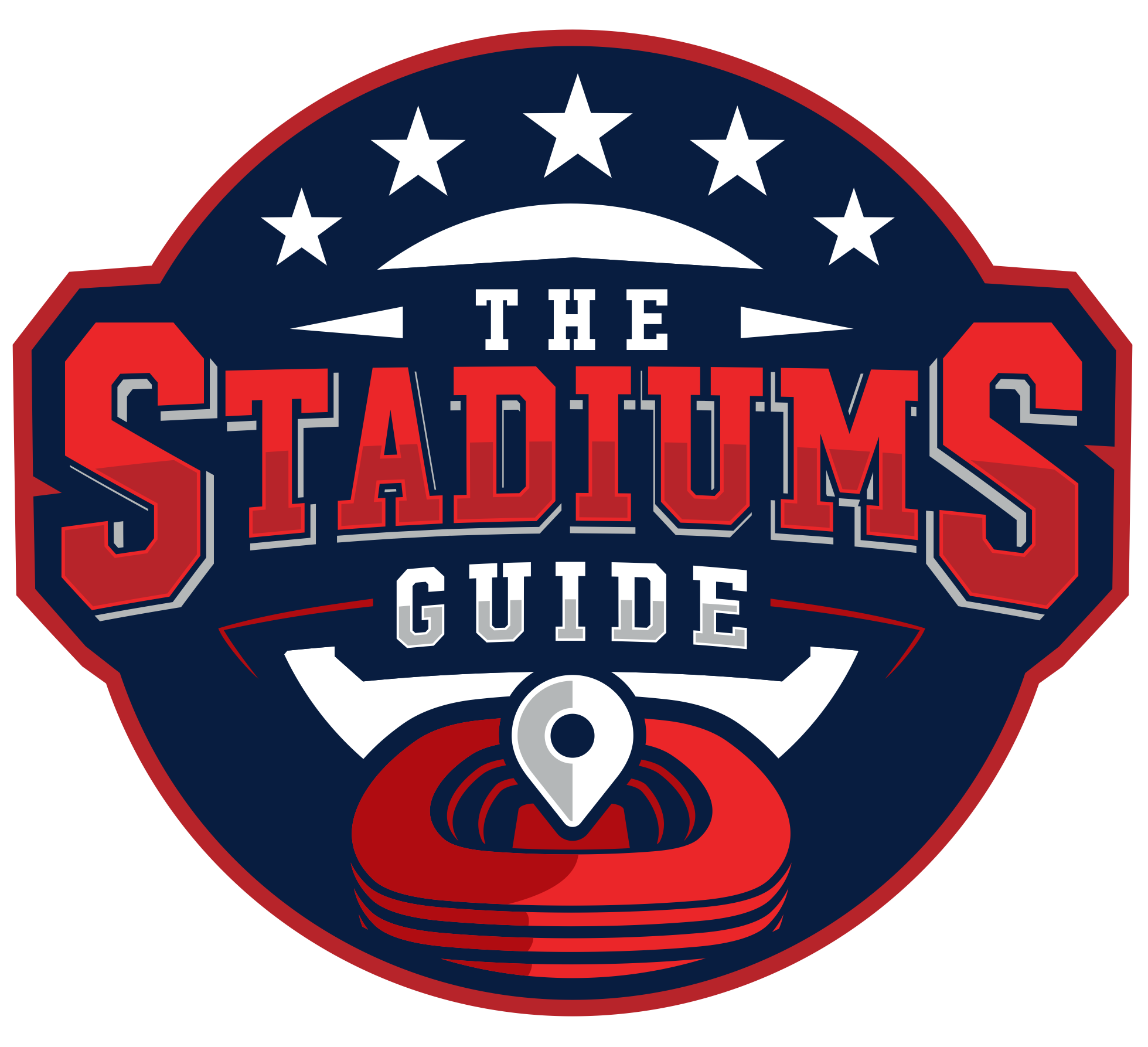Dodger Stadium, the iconic home of the Los Angeles Dodgers, is an essential destination for baseball enthusiasts and an integral part of the team’s history.
Constructed in the early 1960s, the stadium’s design and location were influenced by the vision of the team’s president, Walter O’Malley, who sought to create a world-class sports facility in the Elysian Park neighborhood of Los Angeles.
Since its Opening Day on April 10, 1962, Dodger Stadium has attracted millions of fans and established itself as one of the most recognizable and beloved ballparks in Major League Baseball.
As the largest ballpark in the MLB, Dodger Stadium boasts an impressive size and a stunning view of the surrounding city.
Located just a few miles from downtown Los Angeles, the venue is conveniently situated near various attractions, such as Universal Studios Hollywood, the Los Angeles Zoo, and California State University, Los Angeles.
This prime location, combined with the stadium’s rich history and unique architecture, makes it a must-visit destination for sports fans and travelers alike.
Throughout its six-decade history, Dodger Stadium has played host to countless memorable moments, from thrilling victories to unforgettable performances by famous musicians.
The stadium’s continued success and popularity can be partly attributed to the passionate fanbase and the talented Dodgers players that call this iconic ballpark their home. With a legacy steeped in tradition and innovation, Dodger Stadium remains an enduring symbol of America’s favorite pastime.
History of Dodger Stadium
Construction and Opening
In the mid-1950s, Brooklyn Dodgers team president Walter O’Malley attempted to build a domed stadium in Brooklyn, New York, but faced difficulties with city officials for land acquisition.
This led to a deal with the city of Los Angeles, and construction began on Dodger Stadium. The stadium opened its doors in 1962 and has been the home of the Los Angeles Dodgers ever since.
The Los Angeles Angels also briefly played at Dodger Stadium, calling it Chavez Ravine Stadium from 1962 to 1965.
Since its opening, Dodger Stadium has undergone various renovations and upgrades to keep up with modern standards.
It remains the third-oldest ballpark in Major League Baseball, only preceded by Fenway Park and Wrigley Field.

Notable Games and Events
Throughout its history, Dodger Stadium has played host to many memorable games and events. It has seen 10 World Series, with the Dodgers winning five World Championships (1963, 1965, 1981, 1988, and 2020).
The team has also claimed 11 National League pennants and 19 National League Western Division crowns while playing at the stadium.
Some of the most notable events at Dodger Stadium include:
- 1963 World Series: Los Angeles Dodgers swept the New York Yankees, winning their first championship since relocating to LA.
- 1981 World Series: The Dodgers beat the New York Yankees to win their first World Championship in 16 years.
- 1988 World Series: Kirk Gibson’s iconic walk-off home run in Game 1 led to the Dodgers capturing their fifth championship.
Other notable events at the stadium include concerts, political events, and even a visit from Pope John Paul II in 1987.
Stadium Features
Seating Capacity
Dodger Stadium, located in the Elysian Park neighborhood of Los Angeles, is the largest ballpark in Major League Baseball.
It can accommodate up to 56,000 spectators, providing a comfortable experience for fans with ample seating options, spread across multiple levels, and views of the playing field.

Scoreboard and Video Screens
The stadium features state-of-the-art scoreboard and video display technology. A giant high-definition video screen is located above the left outfield pavilion, displaying high-quality live game coverage, replays, and pertinent game information.
Additionally, there is a traditional scoreboard in the right outfield pavilion that shows scores of not only the current game but also of other MLB games being played across the country.
Amenities
Dodger Stadium boasts a wide range of amenities to enhance the fan experience. The stadium offers:
- Multiple restroom facilities located throughout the venue
- Family-friendly areas with playgrounds and interactive games
- Comfortable seats with ample legroom and cup holders
- Disabled seating and access ramps for a hassle-free experience
- Various ATMs, merchandise shops, and guest services booths
Concessions
At Dodger Stadium, fans have access to diverse dining options to suit their preferences.
From traditional ballpark fare like hot dogs and popcorn to a selection of new, innovative items, there is something for everyone. Some popular offerings include:
- Mediterranean Falafel Bowl, catering to vegetarian options
- Gourmet burger and hot dog stands
- A variety of craft beers and cocktails
- Local, authentic Mexican cuisine
- Refreshing ice cream and desserts
This extensive list of options ensures that guests can enjoy a unique and satisfying culinary experience while cheering on their team.

Transportation and Access
Dodger Stadium, the largest ballpark in Major League Baseball, is located in the Elysian Park neighborhood of Los Angeles, just a few miles from downtown.
The stadium is easily accessible by various transportation options, making it convenient for fans attending games.
Parking Options
Dodger Stadium offers a variety of parking options for fans. General parking is available on-site, but for a more convenient experience, fans can opt for Preferred Parking.
Make sure to check the Dodgers’ official website for parking fees and availability. Additionally, it is essential to arrive early to secure a good parking spot and avoid traffic congestion.
Public Transportation
For those who prefer public transportation, the Dodger Stadium Express bus service, provided by LA Metro, is an excellent option.
This service is available from two convenient locations:
- Union Station
- South Bay
Union Station is served by several Metro and municipal bus lines, as well as Metro Rail’s B (Red), D (Purple), and L (Gold) lines, Metrolink, and Amtrak.
This makes it easy to connect with the Stadium Express from all over Los Angeles. B
est of all, the Dodger Stadium Express service is free for those with a valid game ticket.
In summary, Dodger Stadium offers numerous transportation options, making it convenient for fans to attend games and support their favorite team.
From on-site parking to public transportation alternatives, there are several ways to access the iconic baseball stadium.

Community Involvement
Charitable Programs
The Los Angeles Dodgers actively participate in various community programs to help make a positive impact on local communities.
They support thousands of non-profit organizations through In-Kind Donations by giving away t-shirts, hats, baseballs, and more.
Additionally, the Los Angeles Dodgers Foundation hosts the annual Blue Diamond Gala, a fundraising event attended by Dodger players wearing formal attire, which highlights the foundation’s philanthropic efforts and raises funds for local initiatives.
Youth Development
The Los Angeles Dodgers are well-known for their dedication to youth development.
Their commitment to nurturing young talent is reflected in the renaming of their youth development program to Dodgers Dreamteam.
This program aims to provide opportunities for children in underprivileged areas to develop life skills, participate in sports, and engage with their local community.
James is a big time NBA Golden State follower, who makes sure to catch games when he's in the area. He likes to follow International Soccer, with an interest in small town soccer club, Blackburn Rovers located in the North on the UK.

